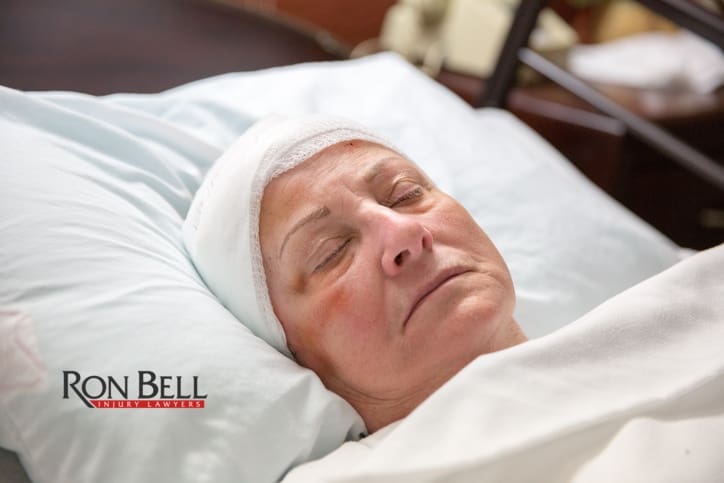March Is Traumatic Brain Injury Awareness Month – Part I

In the U.S., someone acquires a traumatic brain injury every 13 seconds. Yet society as a whole still knows little about the struggles of those who live with the consequences of brain damage.
Silent Disease, Invisible Injury
According to the estimates of the Centers for Disease Control and Prevention (CDC), as much as 2% of the American population, or 5.3 million people, are suffering from some form of disability related to brain injury.
Every year, it claims lives of roughly 52,000 Americans. These statistics mean that the next time you’re shopping for groceries or having coffee at your favorite cafe, you may run into a person suffering from complications from brain injury. Yet, if you do, you probably won’t even notice. Unlike many other types of injuries, traumatic brain injury, or TBI, doesn’t outwardly manifest itself to a chance observer. In many cases, a TBI survivor won’t have scars or wounds and won’t be using crutches or a wheelchair. Still, TBI is as real an injury as any other, more visible type of damage, and the consequences it has on the lives of survivors and their families are often serious and dramatic.
Because the daily struggles and challenges of TBI survivors are often silent and invisible to the general public, there’s still much misinformation and stigma about the condition and those affected by it. For the past three decades, the Brain Injury Association of America (BIAA) has organized public awareness campaigns to educate the public about TBI and the daily realities of TBI survivors. Every March, BIAA launches events and activities that engage communities across the US to become aware of the needs of TBI survivors and their families. The theme of the campaign for the years 2018 to 2020 is Change Your Mind. According to BIAA’s campaign website, the goals of the campaign are:
- De-stigmatizing brain injury through outreach within the brain injury community
- Empowering those who have survived brain injury and their caregivers
- Promoting the many types of support that are available to people living with brain injury
Ron Bell Injury Lawyers care deeply about survivors of traumatic brain injury. We have met and worked with many of them in our daily personal injury practice and we have been moved and inspired by their stories. To show our support for the Change Your Mind Campaign two of our blog posts this month will be about the subject. This week we will present general information on what a traumatic brain injury is and how it may affect a person. Later in the month, we will explore ways family, friends, and communities as a whole can do to support TBI survivors.
What Is a Brain Injury?
To understand what traumatic brain injury is, it is practical to review medical definitions and distinctions of brain injuries. For example, according to BIAA, Acquired Brain Injury (ABI) is a broad category of different types of damages to the brain that are not “hereditary, congenital, degenerative, or induced by birth trauma”.
ABI can be traumatic or non-traumatic. In the case of non-traumatic brain injury, the damage to the brain may be caused by an underlying medical condition such as a disease, or by a sudden dramatic incident, like a stroke, or a seizure. Traumatic brain injury is a result of an external force applied to the skull and the surrounding areas. Sport or workplace injuries can cause it as can domestic violence, assault, motor vehicle accidents, or military action. In any case, both with traumatic and non-traumatic brain injury, the damage manifests itself as “a change to the brain’s neuronal activity, which affects the physical integrity, metabolic activity, or functional ability of nerve cells in the brain”.
Types of Traumatic Brain Injury
Traumatic brain injury can be mild, moderate, or severe. Severe brain injury can result in an extensive or even total loss of cognitive functions that may result in a minimally conscious state, locked-in syndrome, or vegetative state. However, even mild or moderate brain injury can result in some loss of cognitive function and can make the life of the survivor extremely challenging. Therefore, a brain injury victim’s state and struggles should be not be dismissed or undermined just because they have suffered “mild” brain injury. In fact, the various levels of severity of a brain injury are only indirectly related to their impact on the survivor’s life. This is how one university presents the defining features of each of the levels of severity of a brain injury:
Mild TBI
- Brief loss of consciousness, usually a few seconds or minutes
- Post-traumatic amnesia (PTA, a short-term memory loss) for less than 1 hour of the TBI
- Normal brain imaging results
Moderate TBI
- Loss of consciousness for 1 – 24 hours
- PTA for 1 – 24 hours of the TBI
- Abnormal brain imaging results
Severe TBI
- Loss of consciousness or coma for more than 24 hours
- PTA for more than 24 hours of the TBI
- Abnormal brain imaging results
Having this general knowledge, a person may be better equipped to understand and help a person affected by TBI. But what are some practical ways in which friends and family can assist a TBI survivor? Our next blog will explore some useful suggestions.
Why Choose Ron Bell Injury Lawyers?
We Get Results!
